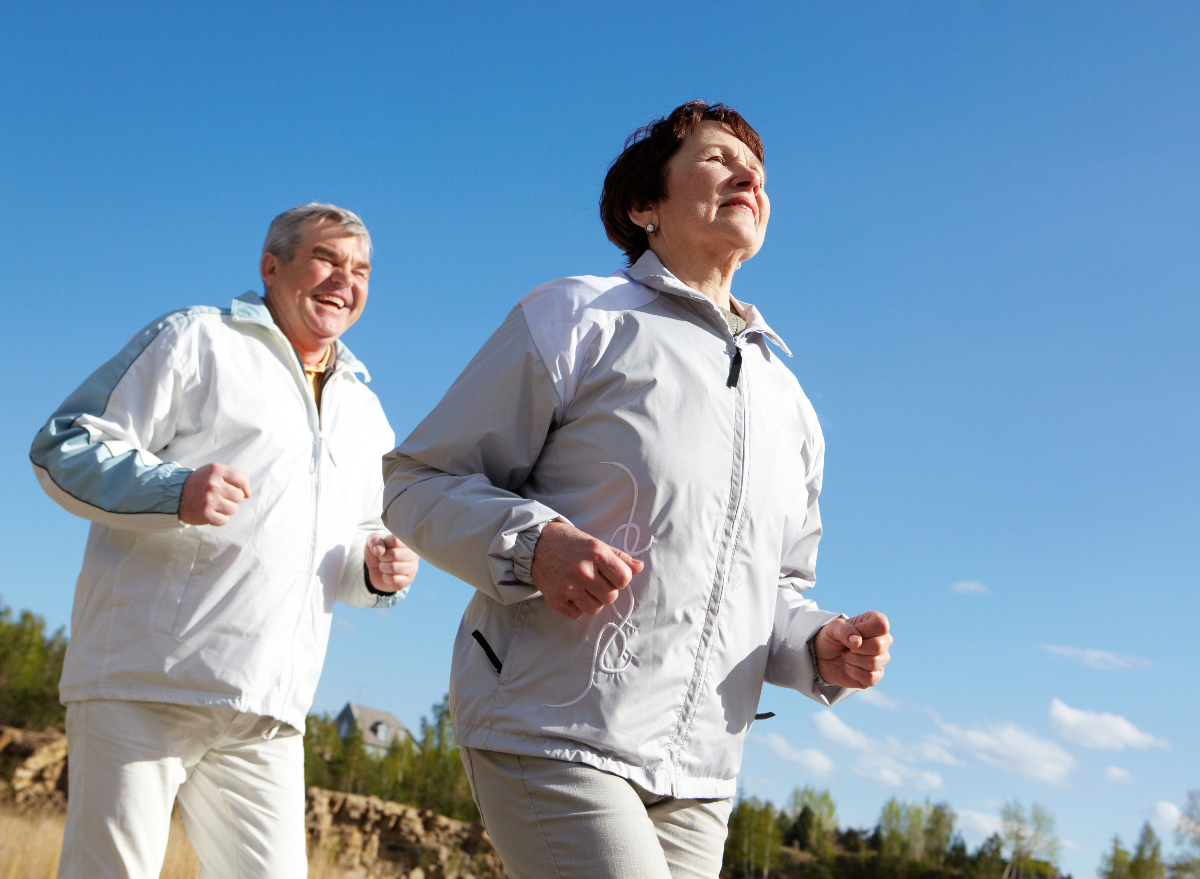The Top 5 Running Habits That Slow Aging, Fitness Expert Reveals

Running is an amazing exercise to build into your routine. It’s fun, you can do it anyplace you happen to be, and most of the time you can do it outdoors. It’s also one of the best aerobic exercises you can do to improve your heart health, burn calories, and keep you young. I’m here today to share the top five running habits that slow aging, so listen up and lace up those sneakers.
Most people want to stay physically fit their entire life, and it’s common to start thinking about it as you get older. It’s something to seriously be mindful of, because as you age, you begin to lose muscle mass, bone density, aerobic endurance, and anaerobic power if you don’t do anything to maintain it.
If you’re looking to slow down the aging process and improve your overall health, I recommend that you incorporate running into your fitness routine. As with every routine, you want to make sure that you’re also maintaining good habits so you get the best results. Here are five running habits that slow aging to consider.
Incorporate Zone 2 training.

One form of training that has gained much popularity over the past few years is Zone 2 training, and when you hear the benefits, you’ll understand why. You can create an aerobic base, enhance your mitochondrial function and resting heart rate, and also lower your blood pressure. Zone 2 training is between 60 to 70% of your max heart rate, and it’s important to stay in that range the entire time during your runs.
If you’re looking to improve your health and slow down aging, I recommend starting off with two or three Zone 2 sessions per week for 30 to 45 minutes.
Related: The Best Fitness Habits That Slow Aging, Trainer Reveals
Mix in intervals.

Next up, it’s important to mix intervals into your routine. Interval runs are a great way to burn more fat and also improve your anaerobic endurance and mitochondrial function. To perform intervals, start off at a lower intensity run, and then alternate that with a faster-paced run. A good interval to begin with consists of a 60-second jog, followed by a 15 to 20-second faster pace. Plan to repeat this for 5 to 8 rounds.
Related: The Best Cardio Exercises To Lose Visceral Fat and Slow Aging, Trainer Says
Run with directional changes.

If you want to slow down aging and improve your coordination, knee, and foot health, it’s a great idea to perform a few drills where you’re changing directions. You can accomplish this by sprinkling in some shuttle runs.
To get started with shuttle runs, set two markers, anywhere from 5 to 20 yards apart. The plan is to run back and forth between them. You can either run laterally in a shorter distance, or you can run forward towards one marker, then run back to your starting position. Ready, set, go!
Run up hills.

One of the most challenging ways to run is to go up hills. It recruits more muscles in your lower body and forces you to work harder due to the incline. You can either do them as a standalone workout or as a finisher after a steady-state run.
Find a hill in your local community you can run up. You’ll start at the base, and sprint uphill as fast as you can until you reach the very top. Once you’re all the way up, turn back around, and walk down slow and steady to where you started. Get your heart rate down, and catch your breath. Then, repeat for 3 to 5 rounds.
Build up your volume and intensity slowly.

Although you do want to improve your performance—especially if you’re new—each week, you need to gradually increase both your distance and intensity. When in doubt, aim to only increase either one by 10% each week.
And if you’re running regularly, it’s important to take note of how many miles you’re putting in and at what intensity each week. Look at your training schedule, and make sure you have a week where you’re deloading, or putting in fewer miles and the pace is slower.








